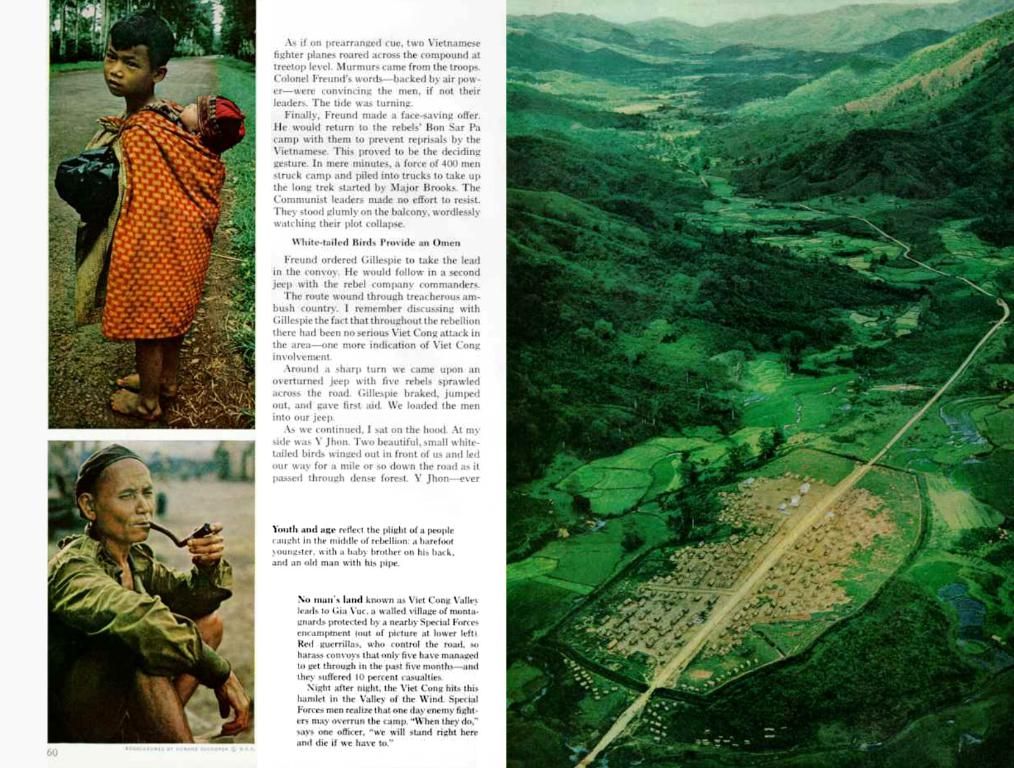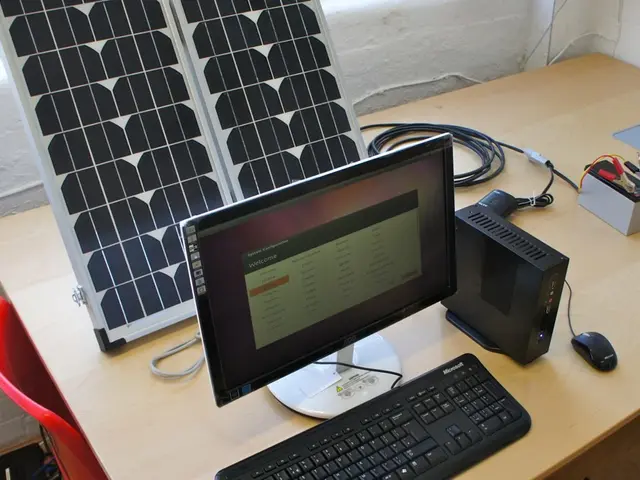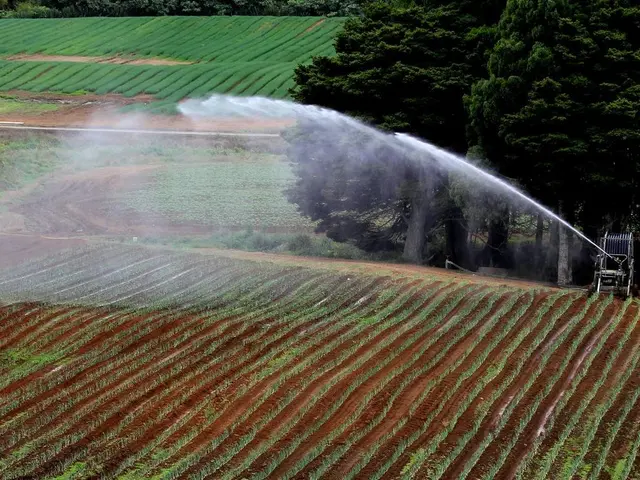A Far-Reaching Impact: How Industrial Emissions Fuel North Pacific Ecosystem Changes
Ocean ecosystem disruption due to industrial emissions pollution
Manoa - Industrial emissions are triggering shake-ups in the North Pacific's marine ecosystem, astonishing scientists from the University of Hawaii. The main culprit? Iron - the very metal that empowers phytoplankton growth is reaching remote ocean regions through human pollution, traveling via the atmosphere and then washed into the sea by rain. Lead researcher Nick Hawco calls this phenomenon a chilling reminder of our global influence, stating, "We're changing things even thousands of miles from the source."
The research, published in the "Proceedings" of the U.S. National Academy of Sciences, unveils how such pollution can profoundly impact marine ecosystems, far beyond its point of origin.
The Great Iron Experiment
A region north of Hawaii, downwind from major industrial centers in East Asia, has been put under the microscope. Preliminary studies revealed the presence of industrial iron in this important fishing area, but its direct impact remained unclear.
Hawco's team investigated water samples, phytoplankton, and ocean dynamics over four expeditions. The results? In spring, the phytoplankton in the studied region suffers an iron deficiency, and supplemental iron fuels its typical spring growth. The sudden phytoplankton boom, however, depletes other nutrients earlier in the season, ultimately triggering a population decline later in the year.
A Peek into the Ocean's Iron Curtain
The research focuses on the North Pacific Transition Zone north of Hawaii, marking the divide between nutrient-poor and nutrient-rich ecosystems further north. The team's findings reveal that with additional iron, this boundary gradually shifts northward - a trend that climate change might strengthen - leaving regions closer to Hawaii to bear the brunt of the changes.
While it's too early to determine if these shifts will affect the biomass of fish and other animals in the region, the implications could be far-reaching. "Given that phytoplankton is the base of marine food chains, it's easy to imagine that a shorter growth period could impact the entire food web," explains Hawco.
Sleuthing the Source: The Science of Isotopes
To trace the origins of such industrial contamination, the team analyzed the isotopic composition of the iron. Isotopes are distinct forms of heavy atoms within an element, each with a unique atomic mass. By comparing the isotopic signature of industrial iron with that of naturally occurring iron, researchers can parse out the sources and amounts of human-derived pollution. The study estimates that about 40% of the surface water's iron content comes from industrial sources.
In the great dance of pollution and the ocean, industrial emissions are playing a more significant role than once thought - a reality that's far more than just an ocean's apart.
Additional Insights:
- Iron's Role as a Fertilizer - Iron is a vital nutrient for phytoplankton, kick-starting photosynthesis and fueling growth. In regions suffering from iron deficiency, such as the North Pacific Transition Zone, the introduction of iron can power extraordinary phytoplankton blooms.
- Ecosystem Alterations - As industrial iron makes its way to the ocean, it can disrupt natural nutrient cycles, altering the structure and function of marine ecosystems even at the base of the food web.
- Seasonal and Spatial Patterns - Research shows that the timing, amount, and patterns of iron inputs have a significant impact on the growth and health of phytoplankton, affecting the ecosystem for better or for worse.
- Cumulative Effects - Climate change is predicted to intensify the northward shift of phytoplankton-rich areas, compounded by the added stress from increased iron pollution, pushing more significant ecological changes throughout the ecosystem.
- The sudden phytoplankton bloom in the North Pacific Transition Zone, caused by increased industrial iron, is found to deplete other nutrients earlier in the season, leading to a population decline later in the year.
- The research further reveals that with additional iron, the boundary between nutrient-poor and nutrient-rich ecosystems is gradually shifting northward, a trend that climate change might strengthen, potentially affecting the entire food web.
- To understand the sources of industrial contamination, the team analyzed the isotopic composition of the iron, finding that about 40% of the surface water's iron content originates from industrial sources, underlining the significant role of industrial emissions in the ocean's ecosystem.







